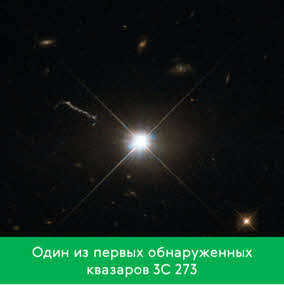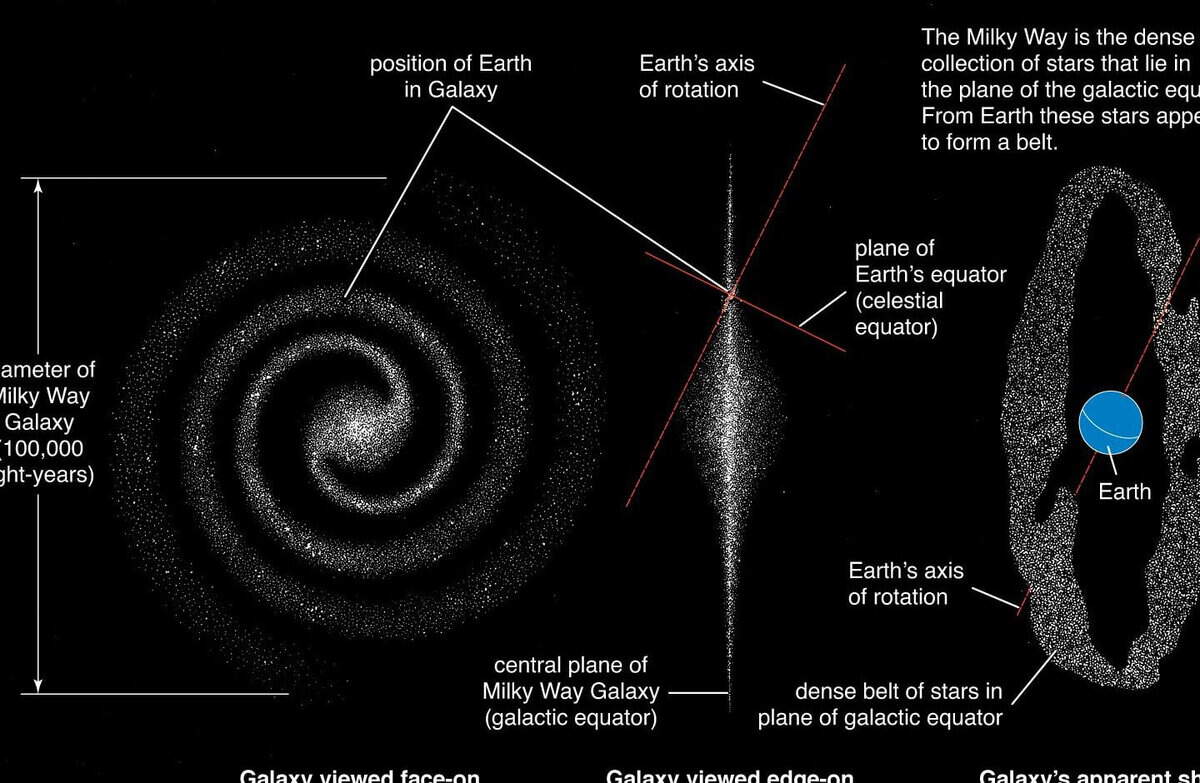Galaxies are vast systems composed of dust, gas, and countless stars. It is impossible to accurately determine their exact number as there are an estimated 100 billion galaxies in the observable universe alone.
While some galaxies bear a striking resemblance to our own Milky Way, there are also unique and distinct variations among them.
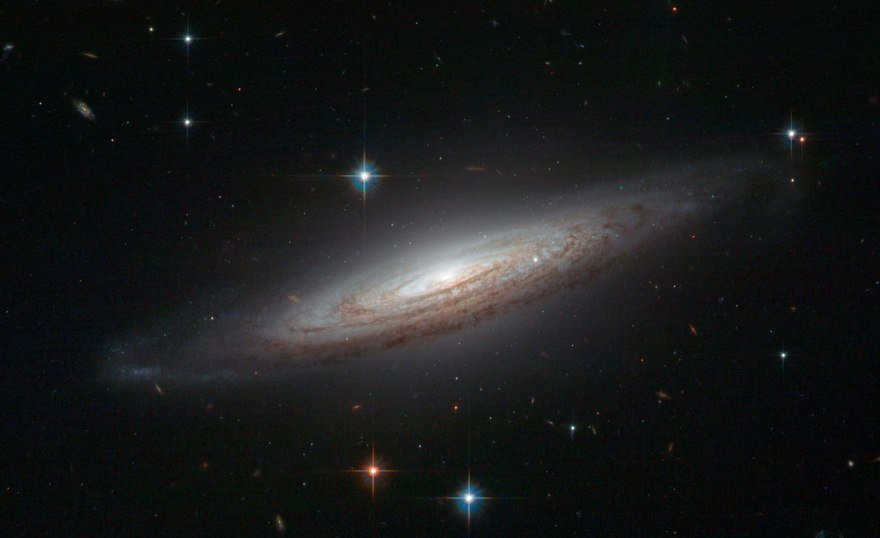
The formation and evolution of galaxies have not been completely comprehended by scientists due to the fact that the initial phases occurred at a very early stage. The age of the oldest galaxies is almost equivalent to the age of the universe, which is estimated to be around 10-13 billion years. To gain more intriguing and valuable insights into the classification and age of galaxies, be sure to watch the accompanying video.
Our Home: The Milky Way Galaxy
The Milky Way Galaxy is our home, a magnificent spiral-type galaxy that stretches across a vast expanse of 100,000 light-years. At its core is a disk-shaped nucleus that spans 30,000 light-years and is filled with a multitude of ancient stars as well as a mysterious black hole. Our galactic neighborhood is situated within the Orion arm, one of the four splendid spiral arms that adorn the Milky Way. This arm is located approximately 30,000 light-years away from the galactic center.
As we journey through space, our solar system dutifully orbits the galactic center of the Milky Way at an impressive speed of 250 km/s. It takes us a staggering 220 million years to complete a single revolution around this cosmic hub. Our galactic adventure is truly a remarkable one!
There are three primary categories of galaxies: spiral, elliptical, and irregular. Spiral galaxies, such as the Milky Way and Andromeda, are characterized by a central core containing objects and a black hole, surrounded by a halo of stars and dark matter. Sleeves extend outward from the core, creating the spiral shape. This shape is a result of the continuous rotation of the galaxy. While some spiral galaxies have only one arm, others can have three or more.
Table of characteristics of the main types of galaxies
| Spheroidal component | Whole galaxy | Yes | Very faint |
| Stellar disk | None or weak | Main component | |
| Gas-dust disk | No | Yes | |
| Spiral branches | None or only near the core | Yes | No |
| Active nuclei | Occur | No | |
| Percentage of total number of galaxies | 20% | 55% | 5% |
Spiral galaxies can be categorized into two types: those with a central bar of stars intersecting the center and those without such a formation.
Around 25% of galaxies are classified as irregular galaxies, which are smaller than spiral galaxies and often have unusual shapes. These irregular shapes can be caused by the formation of new stars or by gravitational interactions with neighboring galaxies. One well-known example of an irregular galaxy is the Magellanic Clouds.
There are also various subtypes of galaxies, including Seyfert galaxies (which are fast-moving spirals), bright elliptical supergiants (which absorb other galaxies), ring galaxies (which lack a central nucleus), and many more.
Classification of galaxies
Spiral galaxies
A spiral galaxy, such as the Milky Way, is characterized by a flat disk, a bulging center, and spiral arms. Within the disk, there is a concentration of stars, planets, dust, and gas that orbit around the center. These objects can reach speeds of up to 100 km/s, resulting in the formation of a spiral pattern. Some spiral galaxies exhibit unique shapes, leading to them being given distinctive names, like the Sombrero Galaxy.
As one moves closer to the central bulge of a spiral galaxy, there is a higher concentration of older stars, while new star formation occurs predominantly within the spiral arms. Surrounding the disks of spiral galaxies are halos composed of enigmatic dark matter.
For further information on spiral galaxies, please refer to our comprehensive article.
Spiral galaxies listed in the Messier catalog
Jumper galaxies
We also have a separate article specifically dedicated to jumper spiral galaxies.
Spiral galaxies featuring a junction in the Messier catalog
Elliptical galaxies
An elliptical galaxy is a galaxy that takes on the shape of an ellipse. They are typically round, but slightly stretched along one axis. They can also be elongated, resembling the shape of a cigar. This category of galaxies consists mainly of old stars (around 1 trillion), with minimal presence of dust and other interstellar matter. The stars are concentrated around a central point, but their movements are random, resulting in limited formation of new celestial objects.
The most famous examples are the giant elliptical galaxies, which can span up to 2 million light-years. However, there are also smaller versions known as dwarf elliptical galaxies.
For more detailed information on elliptical galaxies, please refer to our dedicated article.
Elliptical galaxies in the Messier catalog
Irregular galaxies
An irregular galaxy is a type of galaxy that does not fit into the first two categories. These galaxies have a distorted or undefined shape due to their interactions with other objects.
Learn more about irregular galaxies in our article.
Among the most well-known irregular galaxies are:
Irregular galaxies featured in the Messier catalog
Here is a compilation of lesser-known galaxies:
Clusters of Galaxies
Galaxies can exist independently or in pairs. However, more often than not, they are part of vast associations known as groups, clusters, and superclusters. These entities interact and merge to form singular galaxies. As a result of this process, gases are drawn towards the galactic center, triggering the formation of new stars.
It is predicted that at some point in the future, the Milky Way will merge with the Andromeda galaxy, which is situated 2 million light-years away and can be observed from the Earth’s northern hemisphere. These events mark different stages of galactic evolution, with irregular galaxies eventually transforming into one of the recognized shapes, and spiral galaxies transitioning into elliptical forms.
Scientists hypothesize that galaxies emerged shortly after the occurrence of the Big Bang, an event that took place approximately 10-20 billion years ago and is believed to have given rise to the universe. In the very early moments following the Big Bang, clouds of gas began to come together, collapse, and shrink due to the force of gravity, ultimately forming the basic building blocks of galaxies.
While there is general consensus on this point, there are differing opinions regarding the specific details of how this process unfolded and where it originated. Some propose that the initial stage involved the merging of stellar clusters, each containing millions of stars. Conversely, others argue that galaxies existed from the outset, with stars subsequently merging together to form clusters. The video below provides further insights into the process of galactic structure merging and absorption.
Active galaxies
An active galaxy is a unique type of galaxy that emits a significantly higher amount of energy compared to a typical galaxy. While the Milky Way is considered stable, active galaxies emit approximately 100 times more energy due to explosive events occurring in their nucleus. These energetic explosions release energy in the form of powerful radio waves. Active galaxies come in various forms and classifications.
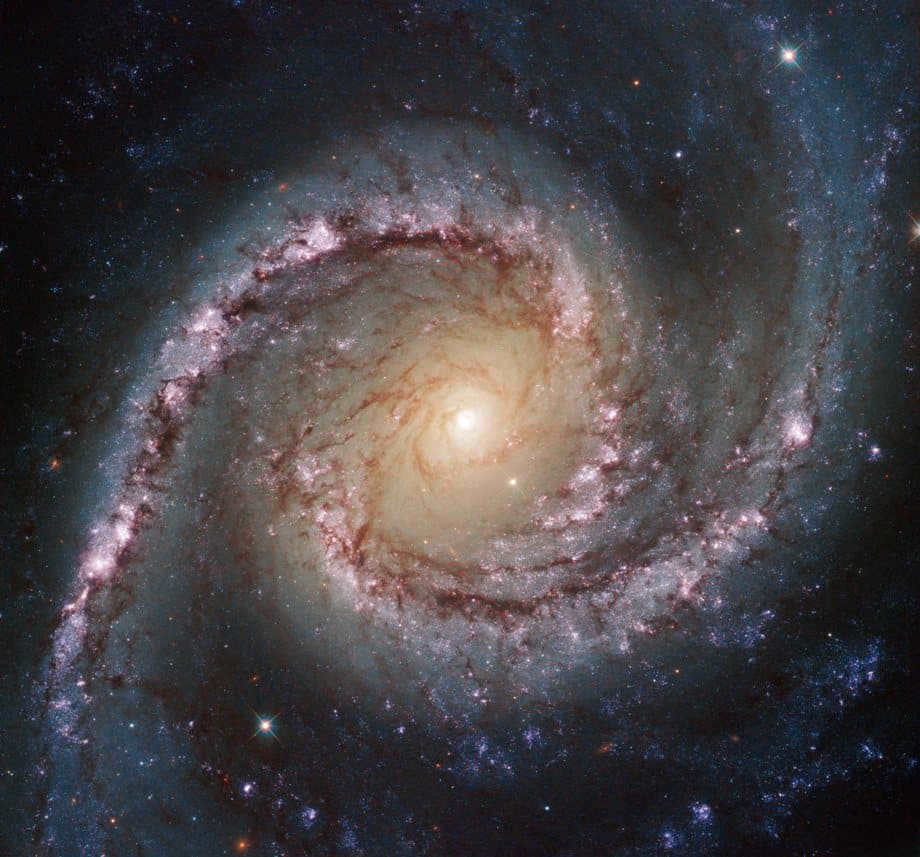
An example of a Seyfert galaxy is the NGC 1566 spiral galaxy.
Seyfert galaxies share similarities with spiral galaxies, but they have highly active nuclei. Quasars are particularly intriguing because they can emit as much energy in one second as the Sun does throughout its entire lifespan. Quasars resemble stars and are considered to be the most energetic objects in the universe. Many scientists believe that quasars are the active nuclei of distant galaxies in their early stages of development. The light we observe from quasars has been traveling for billions of years and may even originate from the earliest moments of the universe.
The identification of our galaxy, the Milky Way, can be attributed to the observations made by ancient humans who noticed a luminous streak in the sky. However, it was not until the late 1500s when Galileo Galilei examined the stars through a telescope that he realized this streak consisted of numerous individual objects. Immanuel Kant further proposed in 1755 that our galaxy was a lenticular star band and that there were countless others scattered throughout the Universe.
Over time, scientists delved deeper into the study of the galaxy, yet still believed that the Sun occupied its center. It was not until 1918 when Harlow Shapley revolutionized our understanding by discovering that we were actually situated on the outer edges of the galaxy.
Hubble, galaxies, and the expansion of the Universe
A great deal of recognition is owed to Edwin Hubble, who demonstrated in 1924 that our galaxy is just one among countless others. By utilizing his 100-inch telescope, he observed that a cluster of stars previously believed to be a component of the Milky Way was, in fact, the Andromeda galaxy, located 2.2 million light-years away. In 1927, Jan Oort confirmed that galaxies undergo rotations around their central points.
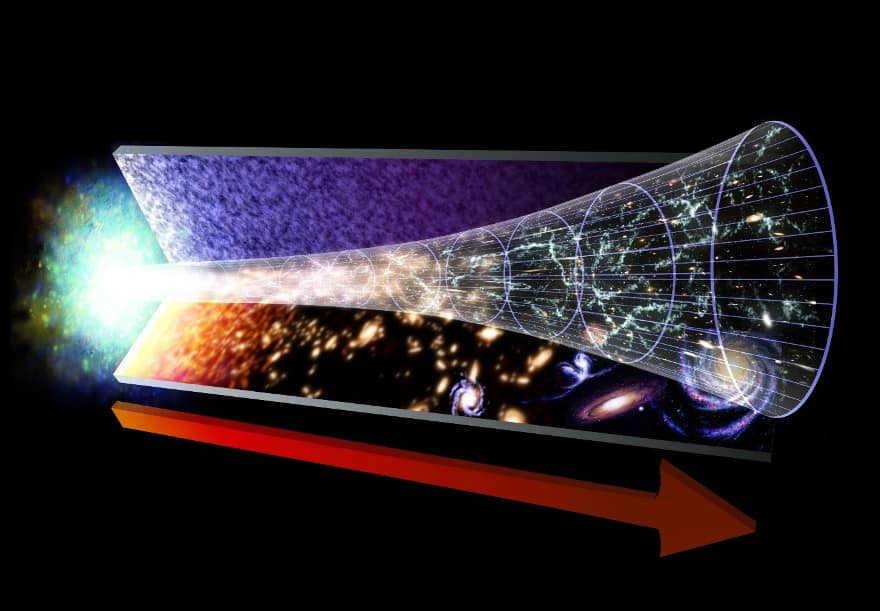
Hubble’s discovery also revealed that galaxies in the distance are moving away from us at incredibly fast speeds. This groundbreaking observation led to the development of Hubble’s law, which states that the universe is continuously expanding.
In 1996, the Hubble telescope captured images of 1,500 distant galaxies during their formation process, significantly increasing our estimated count of galaxies. In the 1990s, scientists believed there were only around 50 billion galaxies, but modern research suggests much higher numbers. Here on our website, you can explore a wide range of galaxy types and browse through high-quality photographs, diagrams, and illustrations of various cosmic structures within the Universe.
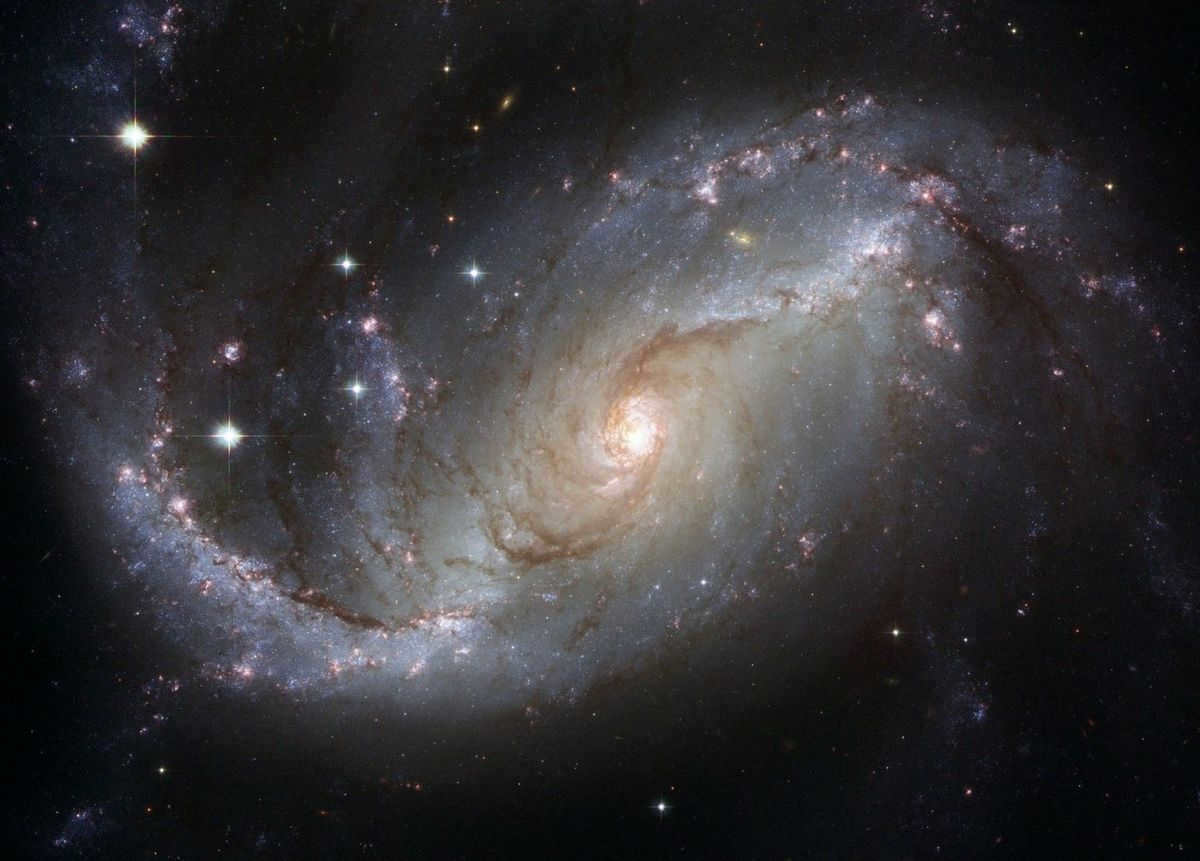
Why do galaxies have a flat shape if stars, planets, and satellites are spherical?
This article aims to address this question.
What determines the flatness of galaxies?
Galaxies are formed when vast amounts of gas and stellar matter combine to form a shapeless cloud under the influence of gravity. As the gas condenses, it accumulates mass and starts to rotate around a denser central region.
The significance of gravity
The presence of gravity plays a crucial role in the formation of a newborn galaxy. As the mass within the galaxy continues to grow, it generates a gravitational force that initiates the collapse of the galaxy onto itself. This force is responsible for compressing the gases that constitute the early stages of a galaxy, causing them to become flattened.
Nevertheless, it’s important to note that gravity is not the sole force at play during the process of galaxy formation.
Centripetal Force and Rotational Velocity
Rotational velocity also plays a crucial role in determining the shape of galaxies, planets, and solar systems. It is the reason why our solar system has a disk-like shape and why all the planets orbit in the same plane.
During the formation of a galaxy, the centripetal force counteracts gravity and pushes gases outward at the equatorial level.
As mentioned earlier, the gravitational forces originating from the galaxy’s center flatten the gases that compose nascent galaxies.
However, the rotation around the galaxy’s center allows these gases to expand and form a disk structure.
There are two additional examples that clearly demonstrate the factors behind the flat shape of galaxies.
If you’ve ever observed a figure skating competition, you’ve likely witnessed an athlete generating increasingly faster rotational speeds while twisting.
In a similar manner, when you’re on a merry-go-round, the greater the speed, the stronger the outward pull, and if the merry-go-round speeds up too much, you might even be thrown off.
This phenomenon that propels spinning objects outward is known as the centrifugal effect. You encounter this on a daily basis when you’re in a car making a sharp turn.
The centrifugal effect, which impacts objects spinning around galaxies or stars, operates in a comparable fashion. It pushes matter outward, causing it to take the form of a disk instead of a sphere.
Planets also experience this phenomenon, albeit to a lesser degree. This explains why the Earth appears slightly flattened at the poles. The Earth’s rotation creates a centrifugal force that stretches it at the equator.
However, due to the Earth’s solid composition, there is no danger of it becoming completely flat. ��
What is the reason behind the spherical shape of certain galaxies?
It is true that there exist galaxies with a spherical form. These particular collections of stars are known as elliptical galaxies.
These galaxies form as a consequence of the collision between two or more galaxies.
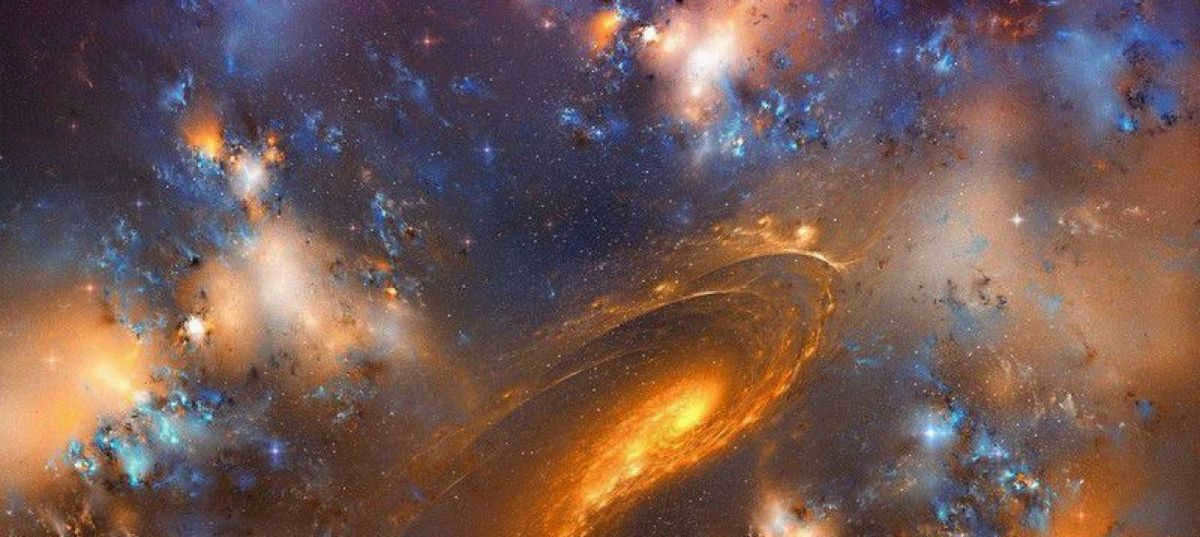
Galaxies are responsible for the formation of vast systems, known as galactic systems, which comprise of numerous stars, ranging in the hundreds of billions. These galaxies exhibit an array of shapes and sizes, encompassing immense elliptical galaxies, spiral galaxies akin to our own Milky Way, and even petite irregular galaxies such as the Large and Small Magellanic Clouds.
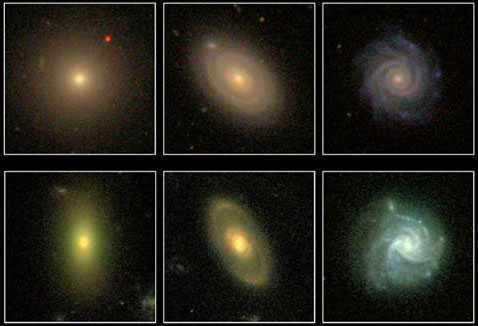
Etymology of the term “Galaxy”
If we were to directly translate the term “galaxy” into Russian, it would become “milk ring”. This name was not chosen arbitrarily – it originated from the observations made by ancient astronomers who noticed luminous areas in the night sky. At first, they believed that these areas were nebulae, but later they came to understand that they were actually observing massive star clusters. Consequently, these celestial objects were referred to as “star islands”. As scientific knowledge evolved and it became apparent that these clusters resembled our own galactic system, they came to be universally known as galaxies.
The Exploration of Galaxies
Since ancient times, civilizations have been fascinated by the celestial phenomena, including the study of galaxies. The ancient Greeks were among the first to actively observe the starry sky, and they were particularly intrigued by the Milky Way. The sheer magnitude of this celestial feature captured their attention, prompting them to explore its origin and nature.
Initially, the Greeks struggled to explain the Milky Way scientifically, leading them to create a mythological narrative centered around the legendary figure of Heracles. According to this tale, Zeus, the king of the gods, sought to bestow divine power upon his mortal son, Heracles. To accomplish this, Zeus secretly brought the infant Heracles to his wife, Hera, so that the child could receive her breast milk, which possessed divine qualities. However, Hera awoke and rejected the child, causing some of her milk to spill across the sky. This celestial spillage then transformed into a magnificent pathway of stars, commonly referred to as “The Road of the Gods.”
The ancient Slavs also had their own interpretation of the galaxy, referring to it as “The Road of the Gods.” This shared understanding underscores the universal fascination and reverence that various cultures have held for the enigmatic beauty of our galaxy throughout history.
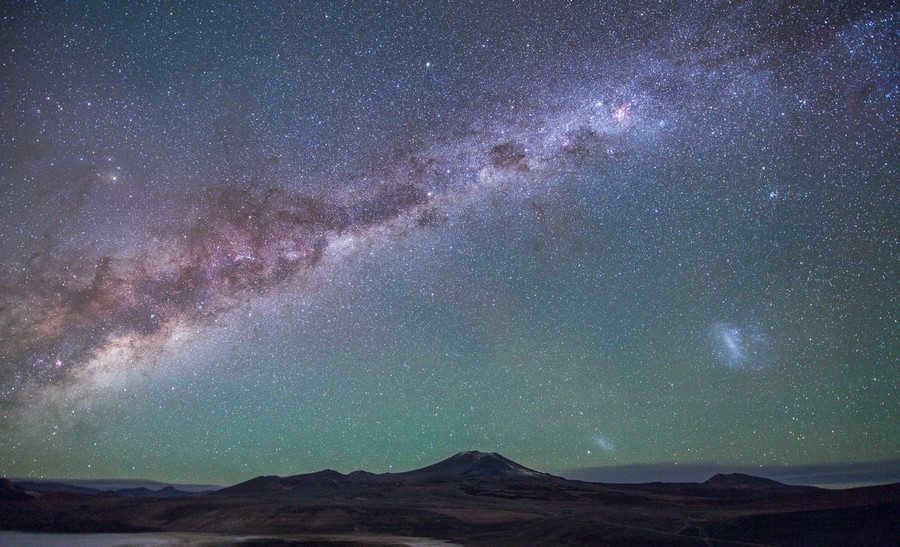
However, ancient Greece had individuals who attempted to provide a scientific explanation for the galaxy. For instance, the philosopher Democritus was among the first to propose that it was a cluster of stars. Nevertheless, he lacked the means to substantiate his claim. It was not until the seventeenth century that Galileo, using a telescope, was able to validate this theory by observing the Milky Way. Subsequently, Kant suggested that this system could have a disk-like shape, a notion that Herschel later confirmed. Herschel possessed the most advanced equipment of his time, enabling him to observe a wider range of celestial objects and implying that we reside within this very galaxy. Additionally, Herschel introduced the concept of the “light-year” – a unit of measurement utilized to describe distances on an astronomical scale.
The exploration of galaxies did not stop there. A century later, astronomer Struve made a groundbreaking discovery by studying stardust in the Milky Way, revealing that our system is located far from its central core. It was only in recent times that it was fully understood that all celestial objects within a galaxy orbit around this central nucleus.
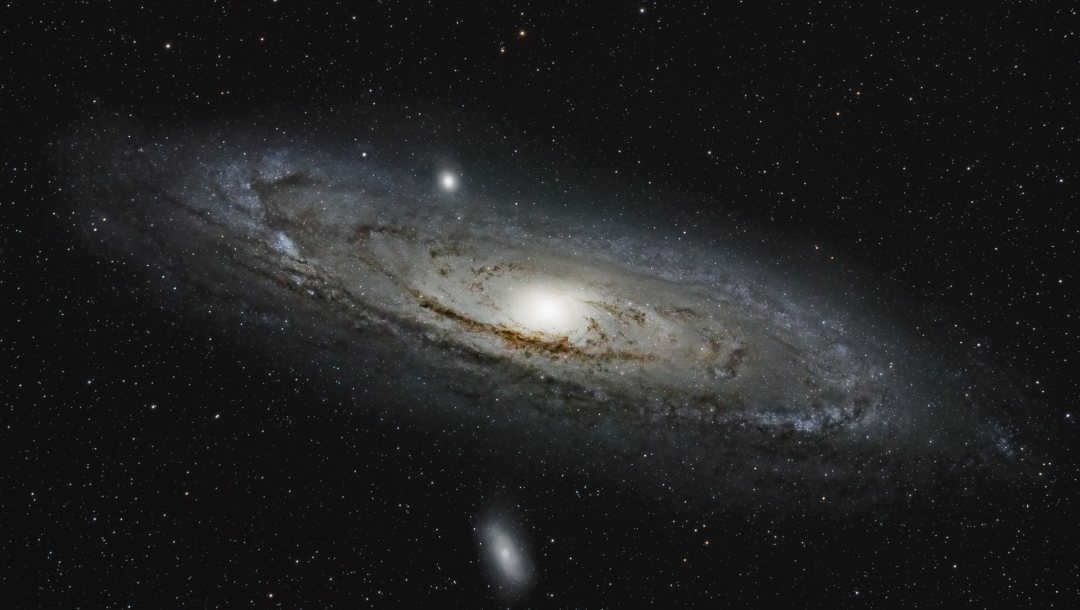
The Formation of Galaxies
Galactic systems originate through the natural development of the universe, influenced by the force of gravity. The initial protoscapes began to form shortly after the occurrence of the Big Bang within the primary matter. Subsequently, galaxy groups of various shapes, depending on the conditions of their formation, began to emerge.
Galaxies primarily consist of old and new stars, referred to as generations. The former are objects formed from primary gas, while the latter are composed of hydrogen and helium. They come into existence through the gravitational compression of gas clouds to a specific density. As a result of this process, a thermonuclear explosion takes place, signifying the birth of a new star.
Galaxy Clusters
The exact number of galaxies in the Universe remains unknown. According to current scientific estimates, there are approximately one hundred billion galaxies in the observable part of space. However, these galaxies are not evenly distributed throughout space. Some regions contain massive clusters of galaxies, while others have only isolated objects.
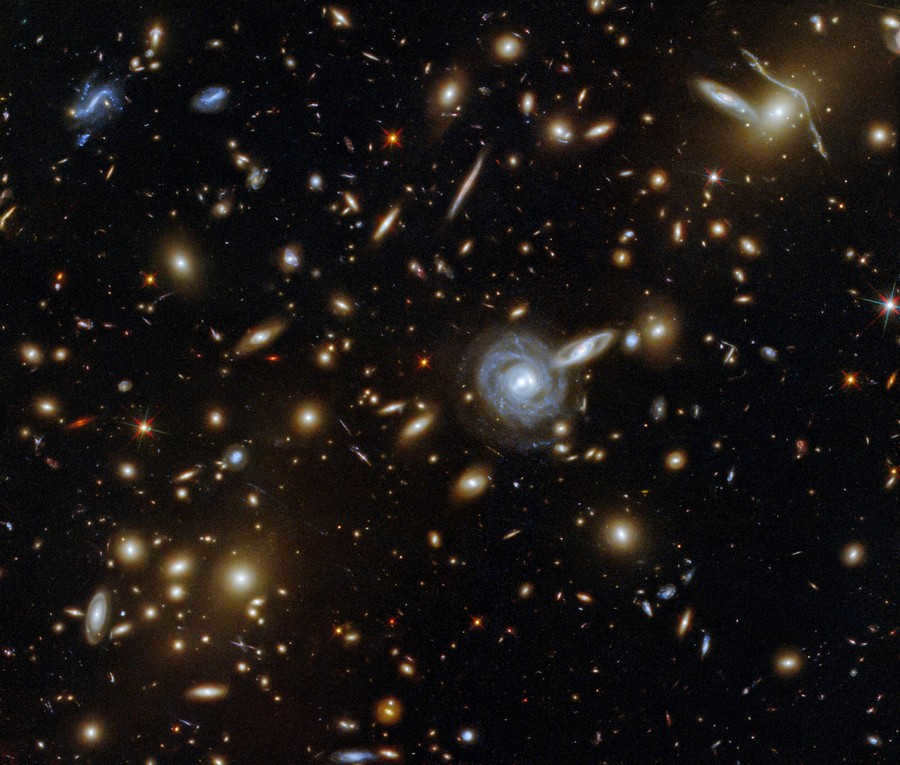
The number of these formations in the Universe is quite limited. Most galaxies come together in various ways to form groups that are dominated by a single, powerful elliptical or spiral galaxy. The gravitational pull of this dominant galaxy attracts all other objects, resulting in the creation of a group comprised of several tens or sometimes even thousands of galaxies. Clusters can also take on different shapes, with some appearing as elongated chains while others form dense walls. These groups are separated by cosmic voids.
Within these groups, galaxies also interact with one another, often colliding and merging. These collisions can result in explosions of truly astronomical proportions, fundamentally altering the structure of the galaxies involved.
Mergers are the most fascinating form of interaction between galaxies. Galaxies slowly spiral towards each other, causing their individual components to gradually merge and giving birth to new stars.
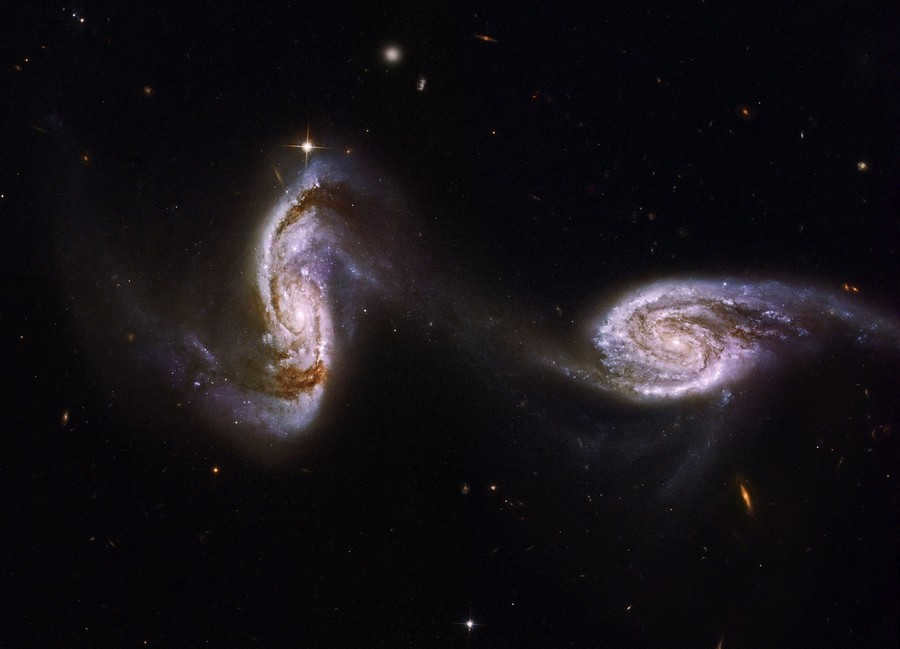
The composition of a galaxy
Galaxies are composed of various star systems, which consist of planets, gas, and dust. These components are held together by gravity and move in relation to the galactic nucleus. The galaxy’s structure can be broken down into the following components:
- The galactic nucleus. This is the central mass of the galaxy that attracts all other elements. The nucleus can consist of a supermassive black hole (such as in the Milky Way), a dust cloud, a cluster of multiple stars, or even black holes.
- Disk. The disk is the central area of the galaxy where all its entities are clustered: stars, interstellar gas, and dust. The disk also consists of spiral arms, which contain young stars.
Occasionally, galaxies have double disks, with the second one being referred to as a polar ring. This occurrence happens when two galaxies merge.
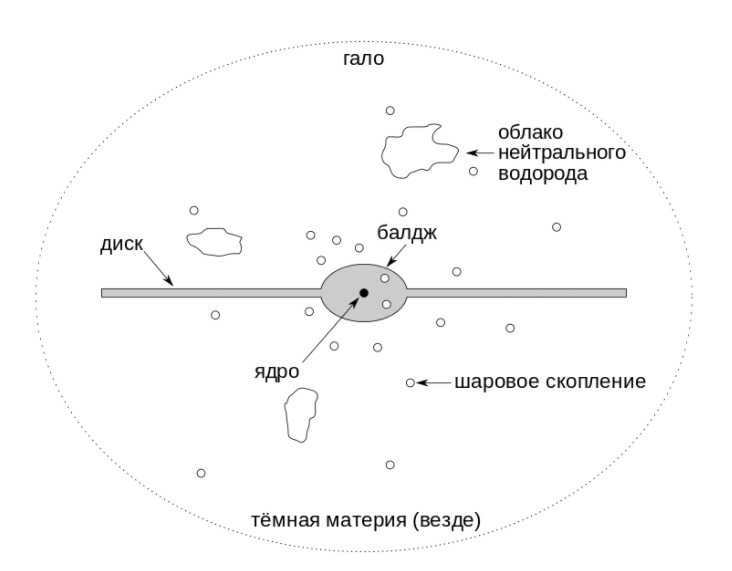
- The spheroidal component. Positioned outside the disk, the spheroidal component is composed of a limited number of stars arranged in a spherical shape around the galactic nucleus.
- Bulge. Also known as the stellar halo, the bulge is a collection of stars encircling the nucleus. Made up of the largest and oldest celestial bodies, the bulge is the brightest region of the galaxy.
Definition of Galaxies
Galaxies, by nature, do not have definitive boundaries, making it challenging to determine their precise form and where they terminate. Nevertheless, scientists have identified several distinct shapes and assigned appropriate names to categorize these types of galaxies:
- Elliptical Galaxies. As the name suggests, these galaxies have an elliptical shape. They lack any arm-like extensions, disks, or central nuclei. Instead, they resemble a bulge that has expanded significantly and taken on a spherical shape. Elliptical galaxies typically consist of star systems with aging red giants or yellow dwarfs and rarely contain supermassive or highly luminous stars.
- Mixed up. These galactic systems have a rounded shape with a raised platform in the middle, which consists of clusters of stars and gas. In terms of structure, they resemble spiral galaxies, but their arms do not originate from the nucleus, but from the raised platform.
- Helical. These systems include the Milky Way. This is the traditional form of galaxies that have spiral arms originating from the nucleus, and sometimes from the junction.
- Unpredictable. Galaxies that do not fit into any of the previous descriptions are known as irregular. They are extremely rare and are characterized by the absence of the main structural components of star clusters. They have no specific shape and resemble torn pieces of clouds.
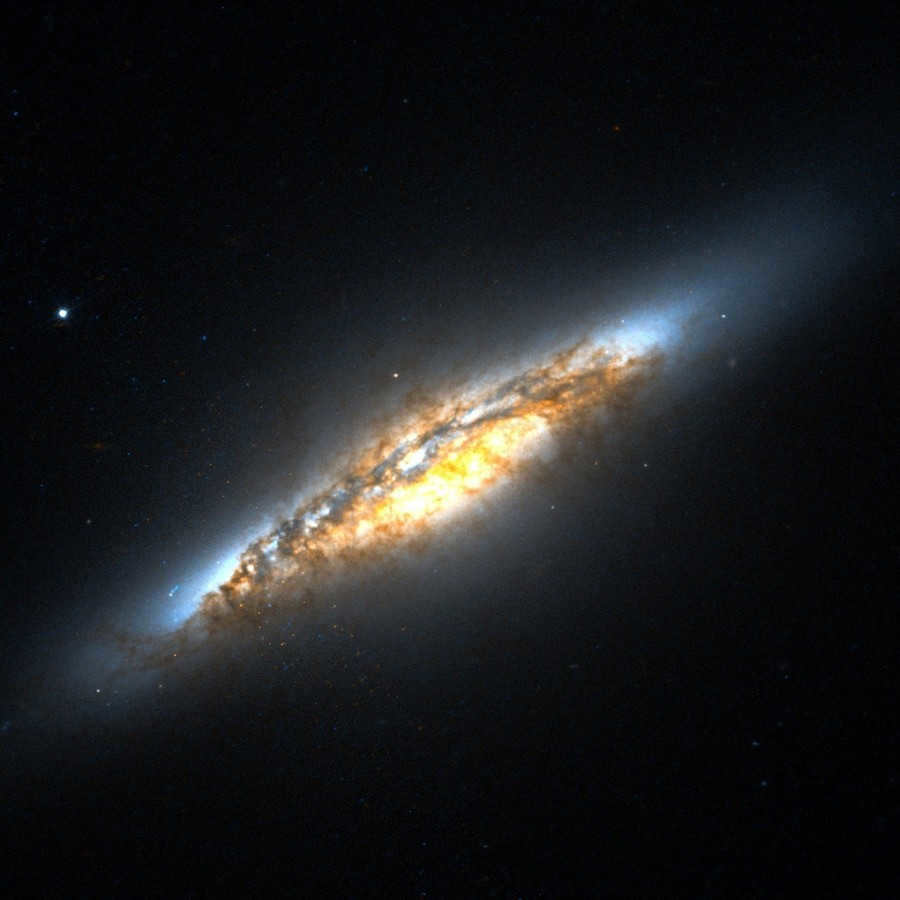
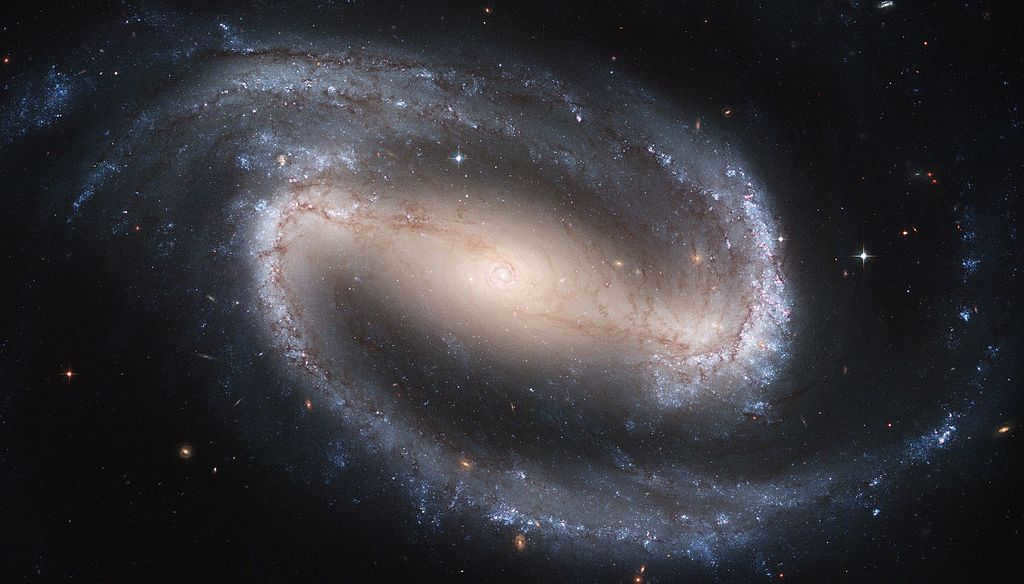

Our galaxy, the Milky Way, is a spiral galaxy with a bar. It consists of approximately 150 billion stars. The solar system is situated on the outskirts of the Milky Way, approximately 30,000 light-years away from the central core.
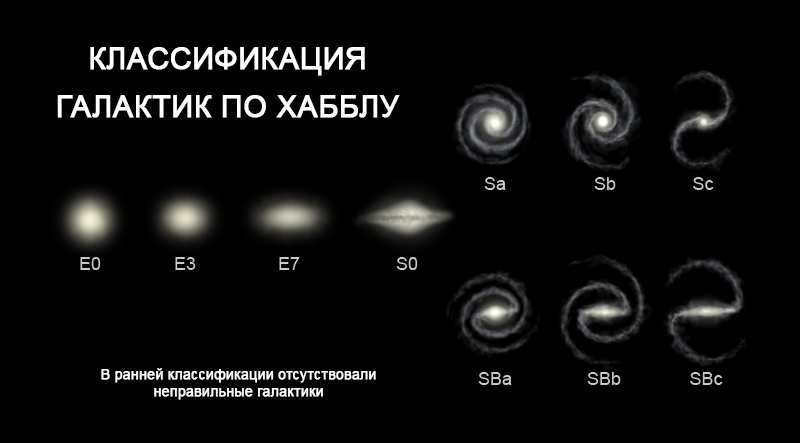
There are three primary categories of galaxies: elliptical, spiral, and irregular. Among these three types, two are further divided and classified into subcategories, and the overall classification is now known as the Hubble Cameraton. When Hubble initially devised this diagram, he believed it represented both an evolutionary sequence and a classification.
However, contemporary scientists now adhere to the following morphological classification, as outlined in the table below:
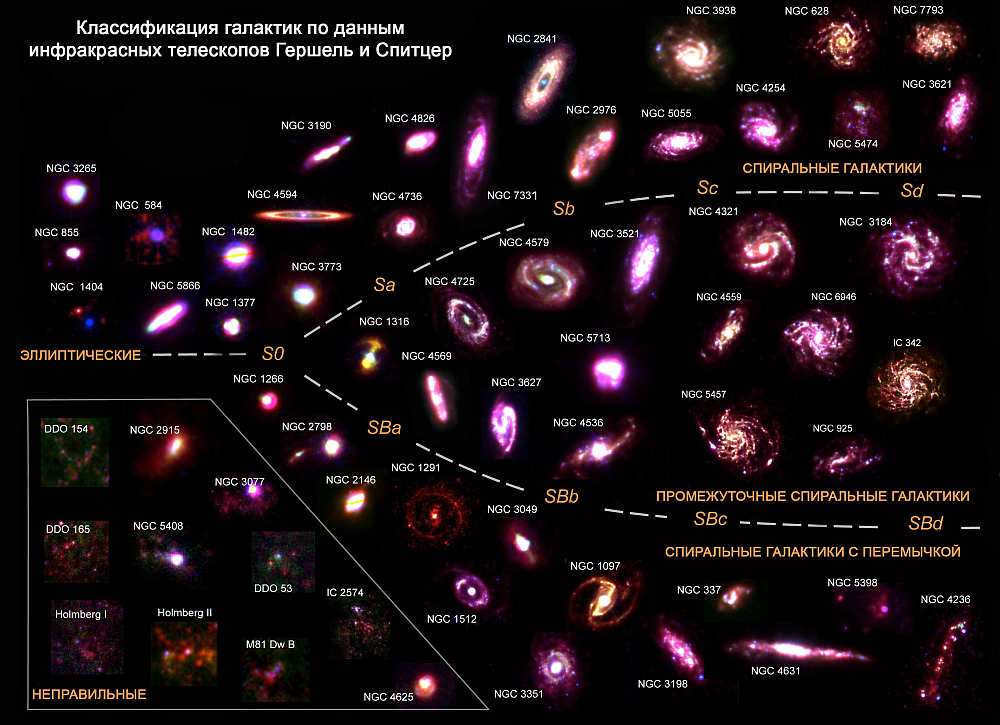
This diagram presents a collection of 61 nearby objects that were observed and documented by the Herschel and Spitzer space telescopes. These objects are situated at distances of approximately 10-100 million light years from Earth and were captured as part of various scientific investigations.
Instead of stars, the images showcase galaxies with interstellar dust that is being heated by young, hot stars. This dust becomes visible solely through the use of infrared telescopes like Herschel and Spitzer.
Each individual image is represented in three colors, highlighting the warm dust (blue) detected by Spitzer at a wavelength of 24 microns, as well as the cooler dust captured by Herschel at 100 microns (green) and 250 microns (red).
Elliptical Machine
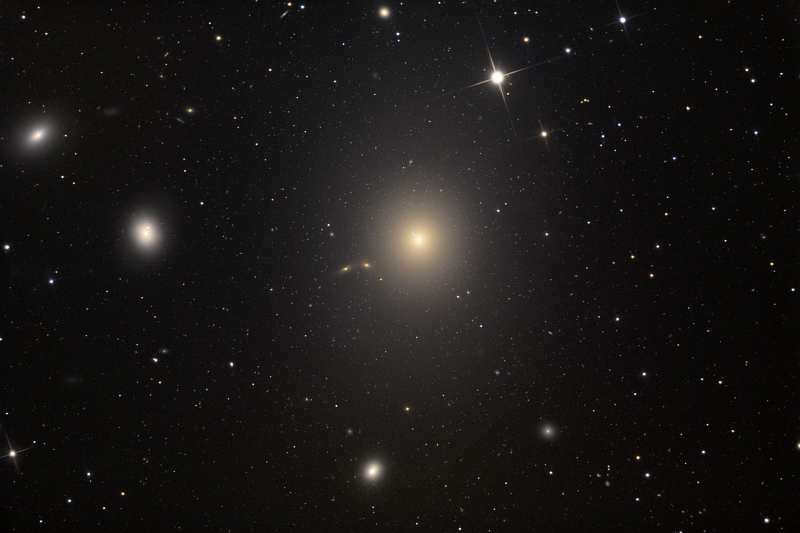
Elliptical galaxies exhibit a distinctive shape that resembles a spheroid or an elongated sphere. When observed from our vantage point in the sky, where we can only perceive two dimensions, these celestial islands of stars appear as ovals or disk-like structures. Notably, the brightness of their surface diminishes as one moves toward the center. The numerical classification of elliptical galaxies corresponds to the extent of their elliptical shape. For instance, a galaxy classified as E0 would possess a perfectly round shape, while an E7 classification would indicate an oval-shaped galaxy. The range of elliptical classifications spans from E0 to E7.
Spiral
A spiral is a curve that starts from a central point and gets farther away as it revolves around that point. It is a common shape found in nature and is often used in art and design. The spiral is often associated with growth, evolution, and transformation. It can be seen in the patterns of shells, galaxies, and even the human ear. The spiral is also used in various mathematical equations and formulas. It is a fascinating shape that has captivated humans for centuries.
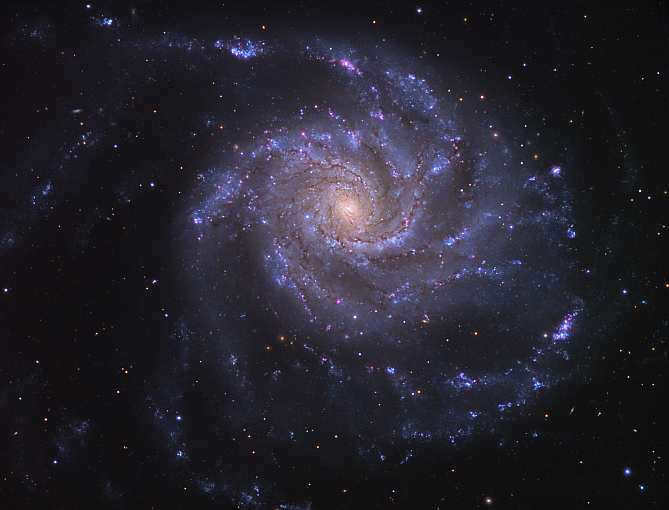
Galaxies can be categorized into different shapes, with spiral galaxies being one of the most common types. Spiral galaxies consist of three main components: a bulge, a disk, and a halo. The bulge, also known as the galactic center, is situated at the heart of the galaxy and is primarily composed of older stars. Surrounding the bulge is the disk, which is composed of dust, gas, and young stars. The disk exhibits various structures, with our very own Sun residing in the Orion’s arm of the Milky Way galaxy. Finally, the halo is a loose, spherical structure that encompasses the bulge. Within the halo, there are clusters of old stars called globular clusters.
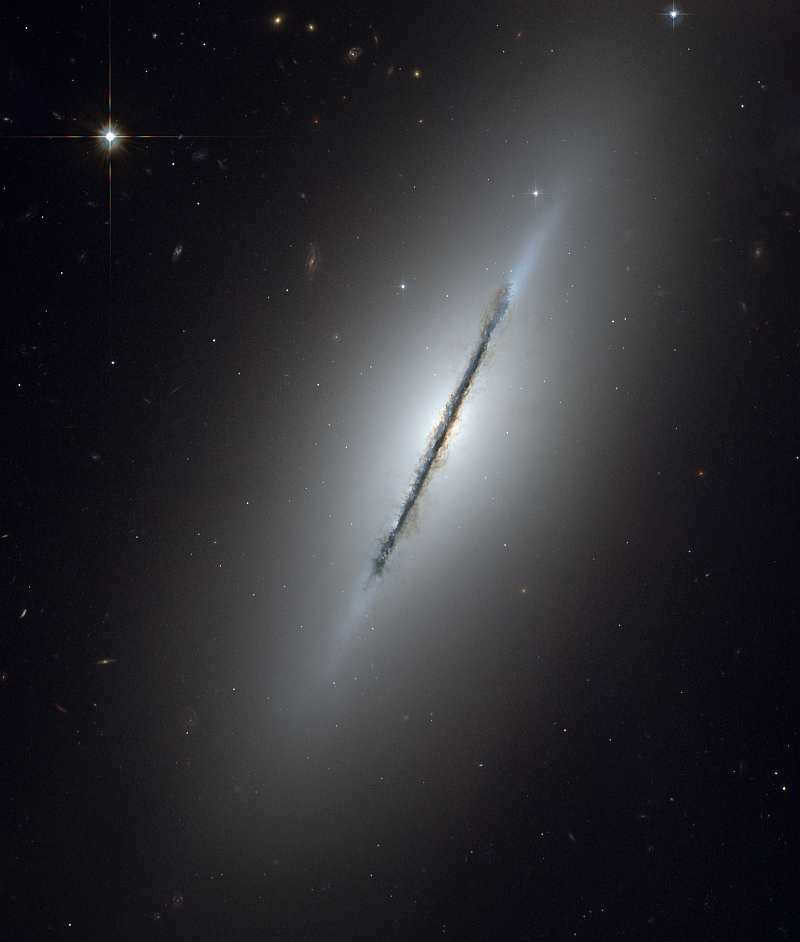
S0 galaxies are a class of galaxies that occupy an intermediate position between E7 galaxies and spiral Sa galaxies. They possess a bulge and a thin disk, distinguishing them from ellipticals, but lack the spiral structure found in Sa galaxies. S0 galaxies are also referred to as lenticular galaxies.
Irregulars
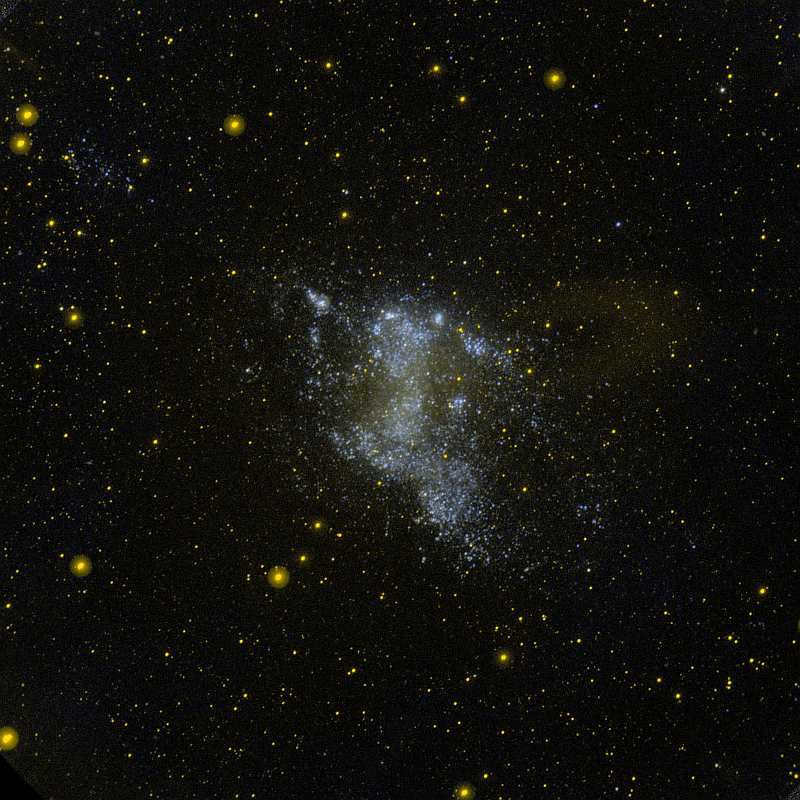
Irregular galaxies lack a consistent and symmetrical structure. They can be categorized into two groups, IrrI and IrrII. IrrI galaxies possess HII regions, which are regions filled with ionized hydrogen. Additionally, they contain a multitude of young, hot stars. On the other hand, IrrII galaxies are rich in dust, which obscures most of the starlight. This makes it exceedingly difficult to observe individual stars within them. Their shape often exhibits complete irregularity.
Did you enjoy reading this article? Share it with your friends!

Upon viewing this instructional video, children will acquire knowledge about the astronomical phenomena known as galaxies. They will be introduced to the primary classifications of galaxies that exist within the vast expanse of the universe. Additionally, we shall elucidate Hubble’s Law and instruct students on the methodology for approximating distances to remote galaxies.
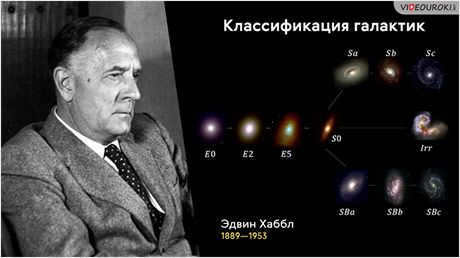
Unfortunately, you currently do not have the ability to watch or share the instructional video with your students
In order to gain access to this and other video lessons included in the package, you will need to add it to your individual account.
Unlock amazing opportunities



Outline of the Lesson on Galaxies
In the previous lesson, we studied the composition of our Galaxy, commonly known as the Milky Way. Let’s recall that a galaxy is a system held together by gravity, shaped like a disk, and comprised of billions of stars and interstellar matter.
As we recall, there are approximately 400 billion stars and luminous nebulae within our stellar system, as estimated by some sources. Among these celestial objects, the only exception is a faint nebular spot visible in the Andromeda constellation, which resembles the form of a candle flame but is not a part of our Galaxy.
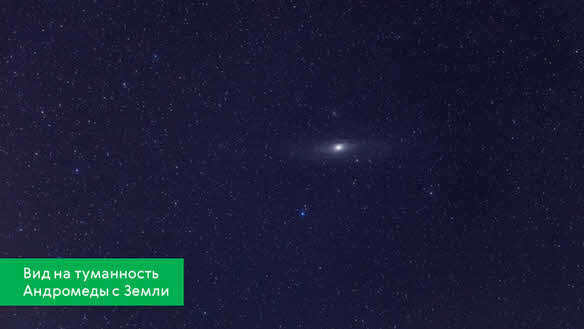
In 1924, Edwin Hubble, utilizing the 100-inch telescope located at the Mount Wilson Observatory, made the groundbreaking discovery that the Andromeda Nebula is situated more than two million light-years away from Earth and is an intricate system comprised of a vast number of stars. At that time, astronomers postulated that various celestial objects previously believed to be spiral nebulae could actually be enormous assemblages of stars. These celestial bodies were subsequently referred to as “island universes” or “stellar islands”. However, as it became apparent that these objects bore significant resemblance to our own Milky Way Galaxy, both terms were ultimately abandoned and replaced by the term “galaxy”.

When we talk about galaxies, we refer to enormous gravitational systems consisting of stars and interstellar matter that exist outside of our own Milky Way.
It is fascinating to note that, up until the early 1990s, astronomers had only identified around 30 galaxies. However, everything changed on April 24, 1990, when the Hubble Space Telescope was launched into Earth’s orbit. This incredible instrument has allowed scientists to discover millions of new galaxies. While the exact number of galaxies in the Universe remains unknown, it is estimated to be in the realm of two trillion.
Research has indicated that the majority of identified galaxies possess dimensions that fall within the range of 5 to 250 kiloparsecs. However, within this vast expanse, there exist extraordinary supergiants such as the galaxy IC 1101. This particular celestial entity spans a staggering diameter of approximately 6 million square years. In comparison, IC 1101 surpasses the size of the Milky Way by a factor of 2000 and possesses a mass nearly 60 times greater.
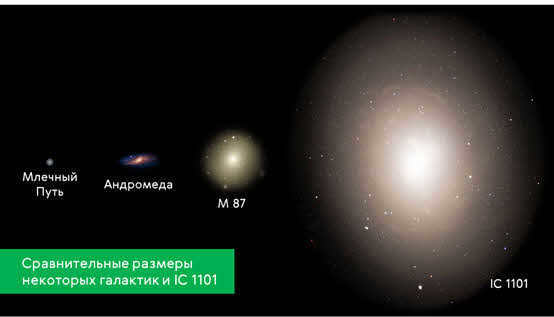
The world of galaxies is incredibly diverse, with variations in size, number of stars, luminosity, and overall appearance. Despite this diversity, most galaxies can be categorized into a few distinct types: elliptical, lenticular, spiral, and irregular galaxies.
Elliptical galaxies are characterized by a well-defined spherical or elliptical structure. The majority of stars are concentrated near the center of the galaxy and gradually decrease in density towards the outer edges. These galaxies consist of red and yellow giants, red and yellow dwarfs, and some low-luminosity white stars.
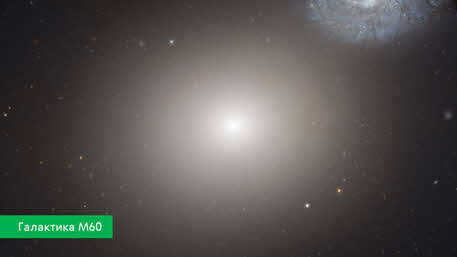
Within these galaxies, you won’t come across any white or blue giants and supergiants, nor will you find any dusty matter. Therefore, the distinguishing factor between elliptical galaxies is primarily their level of compression, or eccentricity. To address this, Edwin Hubble proposed the addition of a number ranging from 0 to 7 to the letter designation of the galaxy, representing its eccentricity on the celestial sphere. However, it’s important to note that this number doesn’t reflect the actual shape of the galaxy, but rather its projection. This means that some galaxies labeled as Hubble type E0 may actually be elongated in reality.
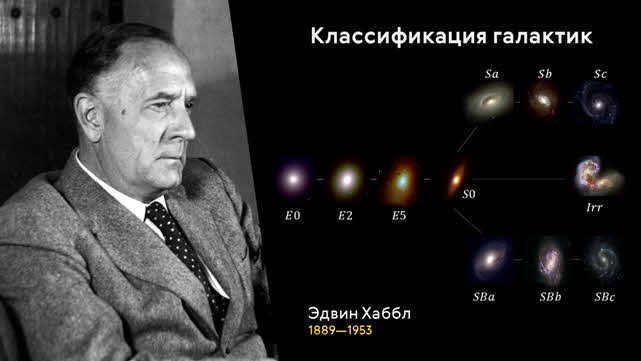
Back in 1966, when examining the spectra of E4-E7 galaxies, it was discovered that their stellar disks exhibit rotational motion. This observation led to the conclusion that these galaxies had been mistakenly classified. In reality, they are actually lenticular galaxies with disks oriented at varying angles relative to our line of sight.
Lenticular galaxies are a type of disk galaxy that has undergone a depletion or loss of interstellar gas. As a result, the rate of star formation within these galaxies is significantly reduced. Consequently, lenticular galaxies primarily consist of very old stars.
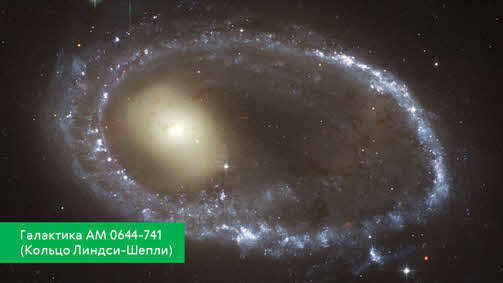
Spiral galaxies are a prominent category of galaxies. They make up approximately 55% of all the galaxies that have been studied in the Universe. These galaxies are characterized by their flattened shape and a central region called the bulge. The bulge bears a resemblance to elliptical galaxies as it contains numerous aging stars and often harbors a supermassive black hole at its core. Surrounding the disk of a spiral galaxy is a vast spherical halo made up mainly of aging stars, which are concentrated in globular clusters.
Spiral galaxies are called spiral because they have bright arms that come from the center and extend outwards. These arms are full of young, hot stars and are constantly forming new stars. Most spiral galaxies rotate in the same direction as the arms.
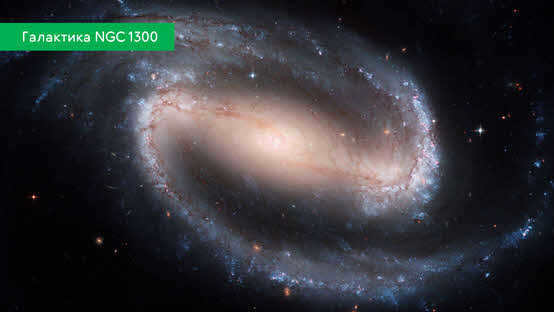
Galaxies are designated with small Latin letters a through d, depending on how closely packed their arms are.
About two-thirds of spiral galaxies have a bar in the center, known as a “bar”, from which spiral arms extend. In contrast, ordinary spiral galaxies have arms that directly emerge from the nucleus. These types of galaxies are referred to as “spiral galaxies with a junction”.
Edwin Hubble classified these galaxies as type SB and further subdivided them based on the tightness of their spiral arms. Our own galaxy, the Milky Way, is also a spiral galaxy with a junction, as observed through infrared observations from the Spitzer Space Telescope.
As we talked about in our previous lesson, the Sun is positioned amidst the spiral arms of the Galaxy and undergoes a full revolution around the Galaxy’s center in precisely the same timeframe as the spiral arms. Due to this, it avoids passing through the areas where active star formation occurs and where supernovae, which emit radiation that can annihilate life, frequently arise.
The largest spiral galaxy that has been observed up to now is NGC 6872. Its overall length is five times greater than the diameter of our own Milky Way, measuring at 522 thousand light-years.
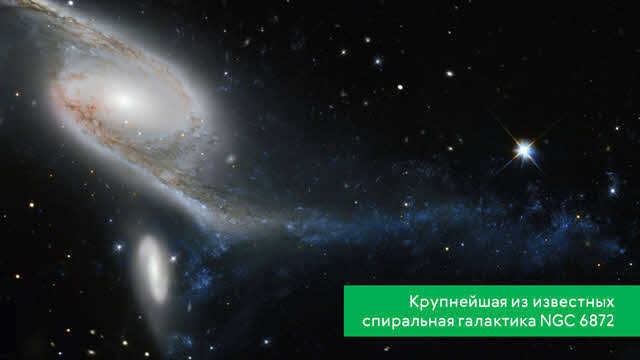
There is another category of galaxies known as irregular galaxies, which do not conform to the Hubble sequence. These galaxies lack the distinct spiral or elliptical structure and often have a chaotic shape with no clear nucleus or spiral arms. However, they contain a significant amount of interstellar gas, accounting for up to 50% of the galaxy’s total mass. As a result, irregular galaxies are home to numerous young, highly luminous stars and regions of ionized hydrogen. In terms of percentage, they constitute approximately one quarter of all known galaxies.
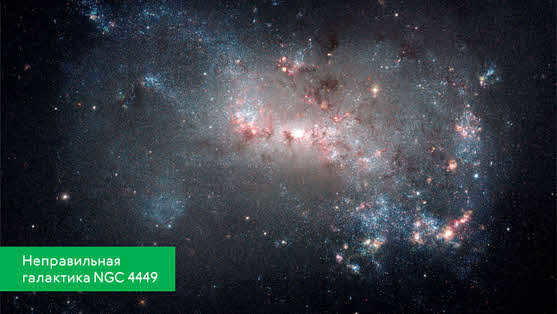
The distances to the closest galaxies are established through calculations of the observable brightness of the Cepheid variable stars:

However, when it comes to distant galaxies, this approach typically falls short. Nonetheless, as far back as 1912-1914, American astronomer Vesto Slifer made an intriguing observation: the spectral lines in the distant galaxies appeared to be shifted towards the red end of the spectrum. According to the principles of the Doppler effect, this indicated that these galaxies were receding from our Solar System at astonishing speeds (reaching up to 1000 km/s).
In 1929, Edwin Hubble managed to determine both the distances and velocities of certain galaxies. His findings revealed a fascinating pattern: the farther away a galaxy is, the faster it is moving away from us. Furthermore, this relationship can be described by a simple linear equation known as Hubble’s law.
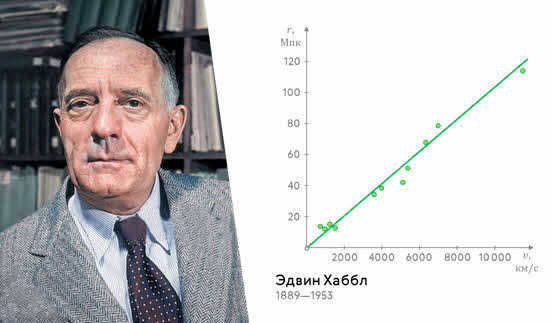
However, in contemporary observations, this relationship takes on a different form:
In the given equation, c represents the speed of light, z denotes redshift, and H stands for the Hubble constant. It demonstrates how the velocity of galaxies increases by 1 Mpc as the distance to them increases, measured in kilometers per second.
The Hubble constant is not truly constant. In other words, its value fluctuates over time. However, the term “constant” is used because, at any given moment in time, the Hubble constant remains the same throughout the entire Universe. According to estimates from 2016, it is approximately equal to 66.93 ± 0.62 (km/s)/Mpc. Therefore, in the present era, two galaxies that are 1 Mpc apart are, on average, moving away from each other at a speed of about 67 km/s.
By utilizing Hubble’s law, we can determine the distance to the farthest objects in the Universe with a relatively high degree of accuracy by observing their known redshift.
Interestingly, this law led to the discovery of a new category of ultra-compact dwarf galaxies in 1999 by Stephen Phillips from Bristol University.
Ultracompact dwarf galaxies are a unique class of galaxies characterized by their incredibly dense stellar population. These galaxies are estimated to be only around 200 light years in size, yet they contain roughly one hundred million stars.
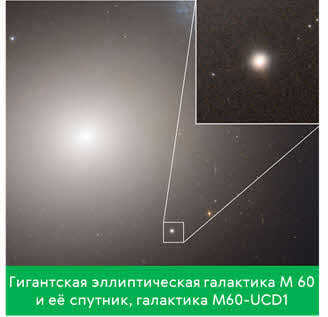
In the year 2018, scientists made a remarkable discovery – they found a supermassive black hole located at the center of an ultracompact dwarf galaxy known as UCD3. The mass of this black hole is over 3.3 million times greater than the mass of our Sun, which accounts for about 4% of the total mass of the entire galaxy. This is quite significant considering the small size of this formation. To put things into perspective, the black hole at the center of our own galaxy has a similar mass, but our galaxy is a hundred times larger in size. This finding has led scientists to speculate that ultracompact dwarf galaxies are remnants of ordinary dwarf galaxies that have had their outer shells captured through tidal interactions with larger, passing galaxies.
It is a well-known fact that the majority of observed galaxies, much like stars, tend to cluster together. These clusters can be categorized into two main types: regular and irregular.
Take, for instance, in the constellation of Veronica’s Hair, there exists a distinct cluster comprising of numerous galaxies numbering in the tens of thousands. A prime illustration of an atypical galaxy cluster is the colossal Pandora cluster (Abell 2744).

Sometimes, the concentration of galaxies in clusters is so high that they can interact with each other through gravitational forces, leading to significant alterations in the shape of galaxies. These galaxies are referred to as interacting galaxies.
Our own galaxy is also an interacting galaxy. Presently, it is in the process of absorbing a dwarf galaxy situated on the opposite side of the galactic disk from us. In a few billion years, it will devour the Magellanic Clouds. And in approximately 4 billion years, it will be consumed by the Andromeda galaxy. Different estimates suggest that this merging process will take anywhere from one to two billion years. Subsequently, these two galaxies will unite to form a colossal stellar system.
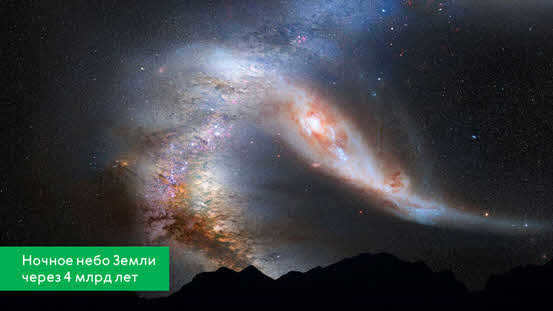
Research on the cores of different galaxies has revealed that some of them emit massive amounts of energy that cannot be accounted for by regular star radiation or explosions. These galaxies are known as active or galaxies with active nuclei.
These types of galaxies can be further classified into Seyfert galaxies, radio galaxies, lacertids, and quasars.
Scientists currently believe that a massive compact object, most likely a black hole, is located at the center of an active galaxy. This object is responsible for the heightened radiation levels, particularly in the X-ray spectrum.
The most notable active galaxies include quasars, which were discovered in 1960 by Allan Sandage and Thomas Matthews. Quasars are a category of astronomical entities that rank among the brightest in the observable Universe.
